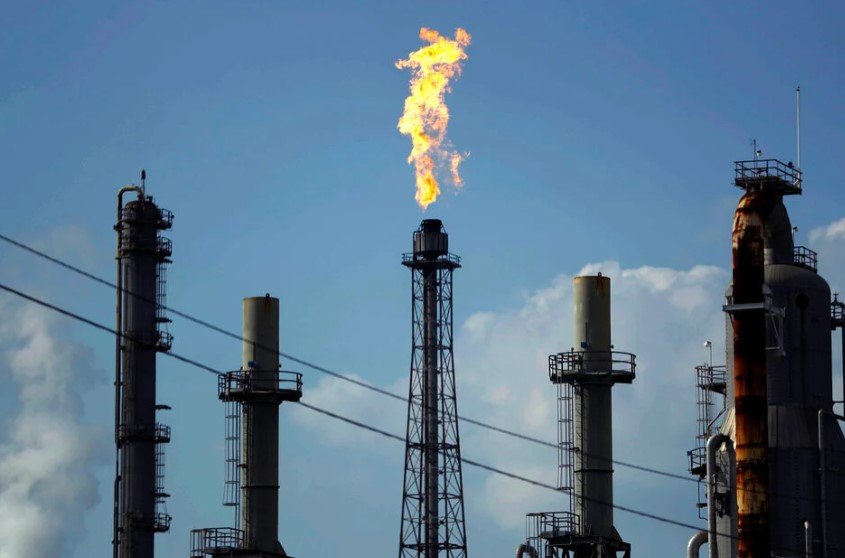Crude price cuts are deepening again — this time led by Riyadh. With OPEC+ surprise output hikes and global demand jitters piling up, Saudi Arabia has slashed its official selling price for May deliveries to Asia to the lowest level in four months.
It’s the second straight month of price cuts, and this one’s the steepest in years. The move could shake up the market as supply pressures mount and oil traders brace for what’s shaping into a global pricing reset.
Arab Light Sees Sharpest Drop in Over Two Years
Saudi Aramco took the axe to prices. On Sunday, the state oil giant cut its May official selling price (OSP) for its flagship Arab Light crude to just $1.20 per barrel above the Oman-Dubai average — a drop of $2.30 from April levels.
That’s not a mild trim. It’s the steepest month-over-month drop in more than two years.
Other crude grades headed to Asia got the same haircut — down $2.30 per barrel across the board.
It’s a sign that Aramco is feeling the pressure from softening benchmarks and weaker-than-expected regional demand. Buyers from China to India, already wary of rising inventories, are now getting oil on the cheap. But even so, they’re not exactly rushing in.

OPEC+ Shocks Markets With Surprise Supply Boost
Just days before the price cut, OPEC+ dropped a curveball.
Eight member nations agreed to accelerate the phase-out of voluntary output cuts, deciding to pump an extra 411,000 barrels per day starting in May. That figure is nearly three times the earlier scheduled monthly increase.
That alone adds about 0.4% to global supply — and that’s without counting the Russian crude already creeping back into Asia’s ports.
The announcement, made on Thursday, wasn’t telegraphed in advance. And the market didn’t take it well.
Crude futures sank nearly 11% last week — their worst showing in more than a year. WTI closed under $70 while Brent flirted with $73, both hitting levels not seen since the pandemic-era lows of early 2021.
Asian Buyers Get Some Relief — But Stay Cautious
For refiners across Asia, this price drop is a small win in a market that’s been punishingly volatile.
The region has been squeezed by high shipping costs, a shaky China recovery, and unpredictable flows from sanctioned Russian and Iranian barrels. The lower OSPs give them some breathing room.
Still, buying enthusiasm hasn’t exactly roared back to life.
-
China’s teapot refiners have reportedly slowed spot purchases.
-
Indian Oil Corp is focusing more on long-term contracts than short-term buying.
-
Japan’s imports are down amid refinery maintenance season.
One trader in Singapore summed it up bluntly: “Cheap oil is great, but demand is meh.”
Spot Premiums Are Collapsing — And So Are Margins
It’s not just OSPs that are sinking. The spot premium for Dubai crude — a key Middle East benchmark — has tumbled hard.
In February, Dubai crude fetched an average premium of $3.33 per barrel. By March, that had slumped to just $1.38. That’s a more than 50% drop in one month.
And it doesn’t stop there. Margins for refining Middle East crude into fuels like diesel and gasoline are under pressure, especially as Asian inventories swell.
Here’s the recent pricing trend that’s got traders nervous:
| Month | Avg. Dubai Spot Premium (per barrel) |
|---|---|
| January | $2.95 |
| February | $3.33 |
| March | $1.38 |
| April (est) | <$1.00 |
That downward spiral is weighing on refiners’ profitability across Asia — especially the independent ones in China, which operate on thinner margins.
Russia’s Return to Asia Adding Fuel to the Fire
Another reason for the price pressure? Russia’s back.
After a temporary dip in January and February — caused mostly by U.S. sanctions and payment hurdles — Russian crude exports to Asia are rising again.
China and India, still snapping up discounted Russian barrels, are absorbing the bulk of that flow.
And it’s crowding out Middle East crude. More supply, same demand, lower prices — the math’s not complicated.
One trader in Mumbai put it this way: “There’s only so many barrels Asia can digest.”
What’s Next? More Uncertainty, More Volatility
Nobody’s calling this a price war — at least not yet. But the signals are unsettling.
Saudi Arabia rarely cuts prices this sharply without a broader strategy in mind. This could be about defending market share in Asia, or pushing back against Russian encroachment.
Some analysts say Aramco is simply responding to weak fundamentals. Others think it’s prepping for a prolonged oversupply phase — especially if global demand slows more than expected.
A few things are clear though:
-
May volumes could rise significantly as OPEC+ boosts output.
-
Asian refiners now hold the upper hand in pricing talks.
-
The rest of Q2 is shaping up to be messy.
For now, oil traders are in full wait-and-watch mode. But with volatility this high and price signals flashing red, calm seems like a distant dream.
